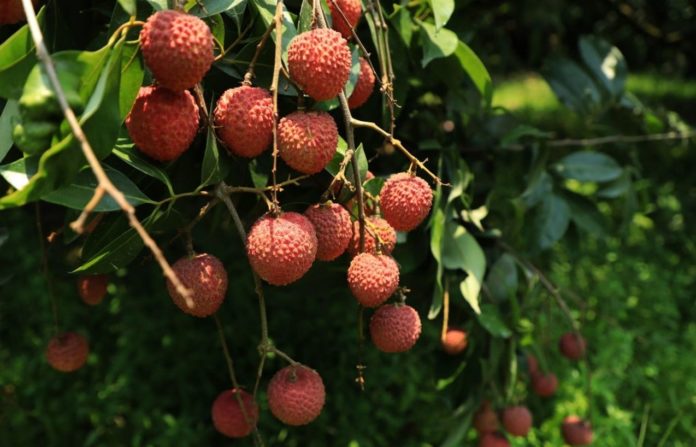Known for their distinctive pink shells and pearly-flavored fruit, they have a spiky exterior but a sweet interior. When traveling to the United States, you may come across them as a tasty flavor in bubble tea, ice cream, or a drink. You can also peel and eat them raw, which is a healthier option.
Since ancient times, Chinese farmers have been cultivating lychees. Cultivation dates go back around 2,000 years. Fresh lychees were in such high demand during the Tang Dynasty one emperor built a specific horse relay to transport the fruits to the imperial palace from harvests in the far south of the country, according to legend.
Scientists have now employed genetics to delve even further back into the lychee’s evolutionary past. And, in the process, they’ve unearthed information that may be useful in evaluating the species’ long-term survival.
“Lychee is an important tropical agricultural crop in the Sapindaceae (maple and horse chestnut) family, and it is one of the most economically significant fruit crops grown in eastern Asia, especially so to the yearly income of farmers in southern China,” said professor Jianguo Li, senior author of the study. “By sequencing and analyzing wild and cultivated lychee varieties, we were able to trace the origin and domestication history of lychee. We demonstrated that extremely early- and late-maturing cultivars were derived from independent human domestication events in Yunnan and Hainan, respectively.”
Additionally, “We identified a specific genetic variant, a deleted stretch of genetic material, that can be developed as a simple biological marker for screening of lychee varieties with different flowering times, contributing importantly to future breeding programs,” added professor Rui Xia, another senior author of the study.
A fruit so popular that it was domesticated more than once.
To carry out the research, scientists created a high-quality “reference genome” for a popular lychee cultivar known as ‘Feizixiao,’ and compared its DNA to those of other wild and farmed types. (All of the cultivars of Litchi chinensis are members of the same species.)
Scientists found evidence of multiple domestication cycles for the lychee tree, Litchi chinensis. It appears that wild lychees originated in the Chinese province of Yunnan in southwestern China, moved east and south to Hainan Island, and were then domesticated independently in each of these two places, according to the findings of the study.
People in Yunnan began producing very early-flowering types, whereas on the island of Hainan, they began cultivating late-flowering varieties that bore fruit later in the year. Finally, interbreeding between cultivars from these two places resulted in hybrids, some of which are still quite popular today, such as the variety ‘Feizixiao’.
The precise time of these occurrences is currently unknown. For example, the study implies that one important milestone, the evolutionary break between L. chinensis populations in Yunnan and Hainan, which happened before domestication, could have occurred around 18,000 years ago, according to the findings. However, this is simply an estimate, and there may be other solutions available. Although the study is limited in scope, it provides an intriguing glimpse into the evolutionary history of lychees and their relationship with humans.
When will this lychee tree begin to bloom? A simple DNA test could provide the answer.
It not only adds fresh chapters to the history of the lychee, but it also provides an in-depth examination of flowering time, which is a crucial characteristic in agricultural production.
“Early-maturing lychees versus late-maturing lychees came from different places and were domesticated independently,” added Albert, PhD, Empire Innovation Professor of Biological Sciences in the UB College of Arts and Sciences. “This, by itself, is an interesting story, but we also wanted to know what causes these differences: Why do these varieties fruit and flower at different times?”
By comparing the DNA of numerous lychee types, the researchers uncovered a genetic mutation that may be utilized to develop a simple test for distinguishing between early- and late-blooming lychee kinds.
The mutation is a deletion — a section of DNA that has been removed — that is located near two genes that are related to flowering and may serve to regulate the activity of one or both of these genes.
Plants from Yunnan have a deletion that is passed down from generation to generation. Hainan varieties that develop later in the season do not contain any. And Feizixiao — a hybrid with about equal quantities of DNA from each of the two regional populations — is “heterozygous” for the deletion, which means that it has just one copy inherited from one parent, as opposed to the other two. This makes sense because Feizixiao flowers in the spring, but not excessively so.
“This is very useful for breeders. Because the lychee is perishable, flowering times have been important to extending the season for which the lychee is available in markets,” Albert added.
This genome analysis of the lychee was launched by a team at SCAU as part of a larger initiative that aims to significantly increase our knowledge about the DNA of major flowering plants belonging to the same family, the Sapindaceae.
“Sapindaceae is a large family that includes many economically important plants,” Xia said. “So far, only a few of them, including lychee, longan, rambutan, yellowhorn and maple, have had their full genomes sequenced.”
“The main research interests will be flowering, secondary metabolism leading to flavors and fragrances, flower and fruit development, among others.”
Source: 10.1038/s41588-021-00971-3
Image Credit: Getty
You were reading: Scientists open new chapter in curious history of Lychee
